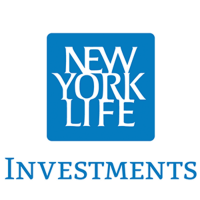Bond Bubbles and Credit Calibrations
Credit Risk Analysis and the High Yield Bond Market
Total debt levels worldwide have risen significantly since the GFC, especially lower credit quality debt. McKinsey & Company points out that the sub-investment grade bond market has grown nearly 4X over the past decade. So is there a bubble in high yield, and how can a 'proper' credit analysis better prepare investors for the next liquidity crisis (or the next wave of corporate defaults)?
For any investors curious about the dynamics of the high yield market or high yield credit analysis in general, the first paper listed below is an excellent primer on both subjects. Others discuss credit spreads, the integration of factors into investment grade fixed income analysis, and the current outlook for credit.

High Yield & Corporate Credit Spread Analysis
Foundations of High-Yield Analysis (CFA Institute Research Foundation, 2018)
This Research Foundation brief is densely packed with insight about high yield credit - from the dynamics of the bond market, to analyzing spreads and bond covenants, to forecasting default rates and understanding bankruptcy proceedings.
Good Credit Selection is the Key to Good Returns in US High Yield (Eaton Vance, Feb 2019)
For compliance reasons, this paper is only accessible in the United States and Canada
The authors describe why they believe the selection of good credits will be increasingly important in US high yield.
Can a High-Yield Allocation Still Offset Equity Volatility? (AB blog, 2019)
For compliance reasons, this paper is only accessible in North America and South America
So the high-yield bond market didn’t predict the equity market selloff in late 2018. Should investors be concerned? AB doesn't think so, instead suggesting that investors consider adding high-yield exposure in order to reduce overall risk.
The Myth of the Credit Spread Puzzle (Feldhutter and Schaefer, 2018)
The authors update a particular credit risk model so that it better accounts for historical default rates and leads to better estimates of credit spreads and investment grade default likelihood.
Hedging High Yield and Emerging Market Bond Tail Risk With VIX® Futures (S&P Dow Jones Indices, 2017)
S&P Dow Jones Indices describes how to use VIX futures instead of index-based credit default swaps to hedge credit risk in both high yield and EM debt markets.
CLO Markets: Opportunities Amid Risks in 2019 (PIMCO, Feb 2019)
PIMCO provides their 2019 outlook for the CLO market, including updates on recent market-related events affecting both high yield credit and CLOs.
The Case for Quantitative Investment Approaches in the Corporate Bond Market (Man Group, 2019)
Systematic credit strategies could benefit high-yield investors - the authors seek to show that a rigorous approach to identifying idiosyncratic opportunities and risk modeling can both generate alpha and further optimize asset allocation.
Credit Factors
The Low Volatility Factor in U.S. High Yield Corporate Bonds (S&P Dow Jones Indices, 2017)
The authors adapt a low volatility approach to the corporate bond market by using DTS as a proxy for credit risk and then using a MCR approach to screen out risky bonds.
Why should investors consider credit factors in fixed income? (Invesco, Apr 2018)
For compliance reasons, this paper is only accessible in certain geographies
The choice of factor definitions is important, if they are to be applied to other asset classes like fixed income. Invesco describes the particularities of several multi-factor credit models.
Factor investing in corporate bonds - client cases (Robeco, 2018)
Factor investing works in the equity market because of forces like investor behavior, market constraints, and regulations (amongst other reasons), but these forces could also apply to the corporate debt market. Robeco presents several rationales for utilising factors in corporate credit.
The Outlook for Corporate Debt
Euro Credit: 2019 Outlook (Pictet WM)
Pictet Wealth Management's Euro Credit: 2019 Outlook describes how the path ahead for Euro corporate bonds will be defined by Italian developments and the support of the ECB.
Rising Corporate Debt: Peril or Promise? (McKinsey Global Institute, 2018)
Total debt has risen dramatically since the global financial crisis. This McKinsey paper looks at credit quality in the corporate debt market, the sustainability of the current debt levels, and other risks entailed for corporations, banks, and investors.
Investment Insights: Does corporate America have a debt problem? (UBS AM, Jan 2019)
This quarter’s Investment Insights looks in more detail at US corporate leverage. In particular, questioning whether recent concerns about debt levels are merited or not.
Some Rising Pressure Points in Global Debt (Moody's, Dec 2018)
Global leverage as a share of world GDP has been rising. But are these debt levels sustainable? Moody's looks at debt servicing costs over the next few years as well as other potential points of concern.





